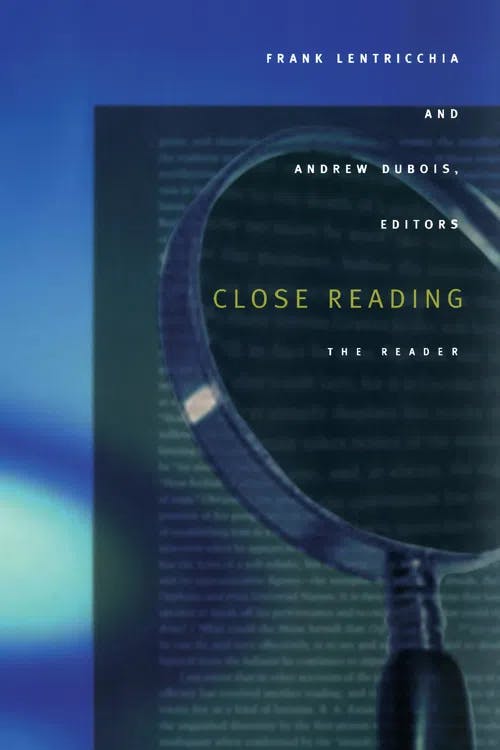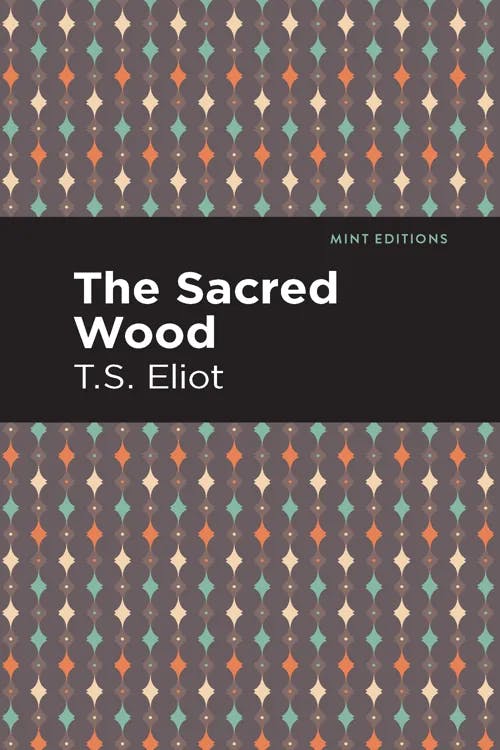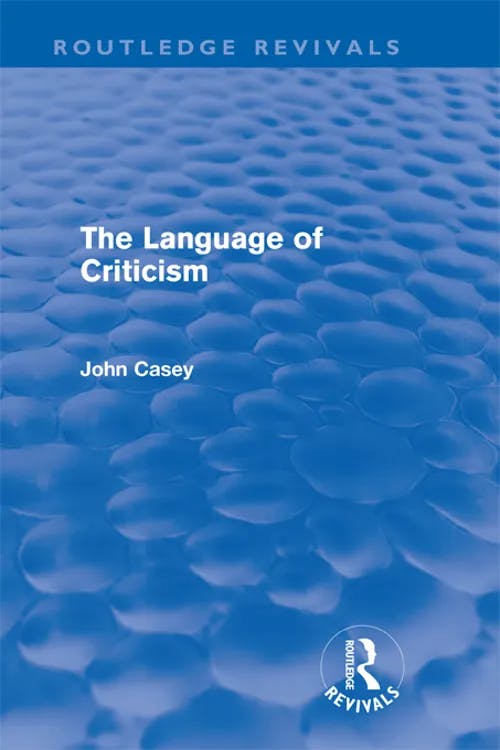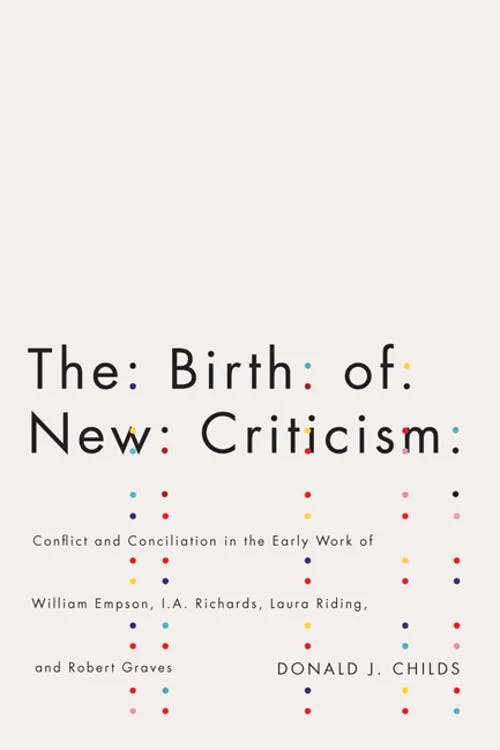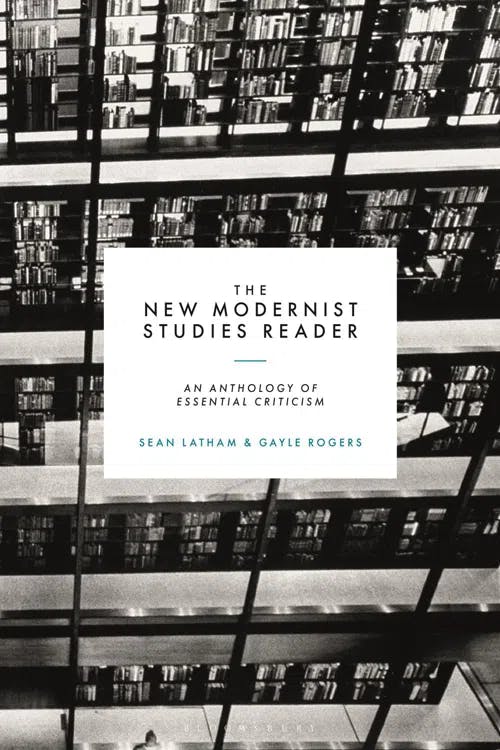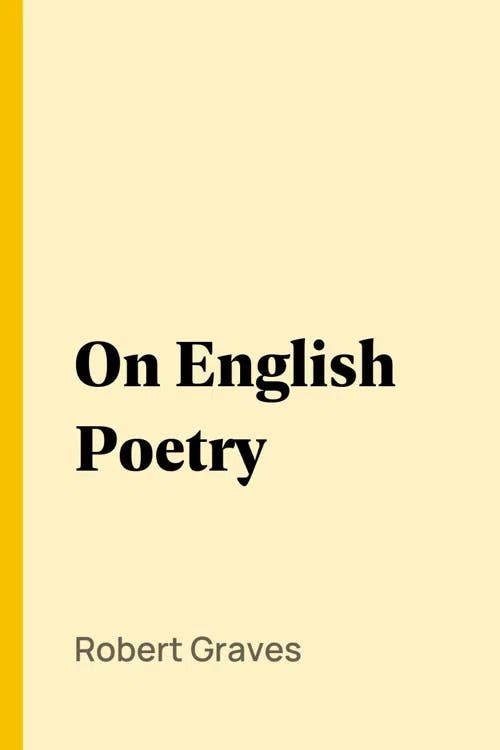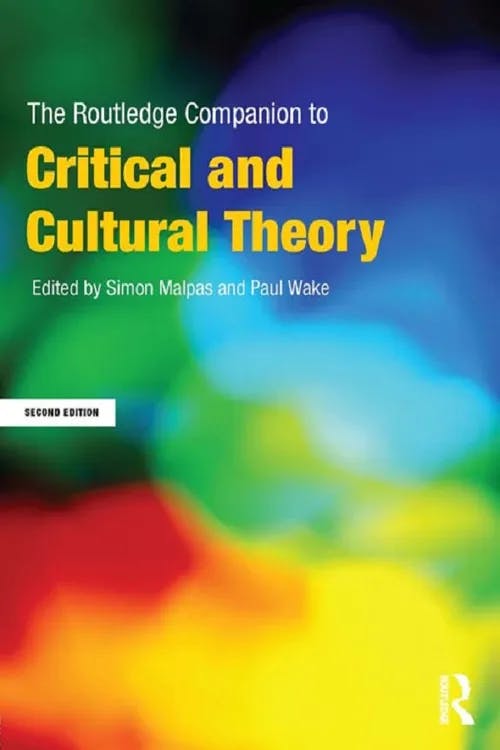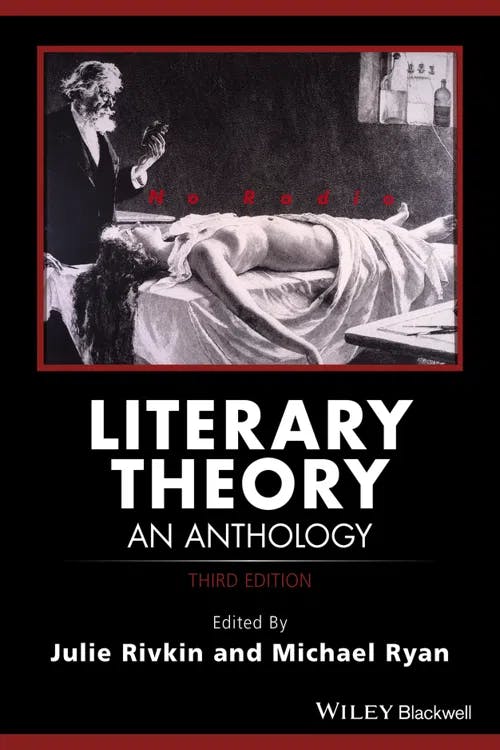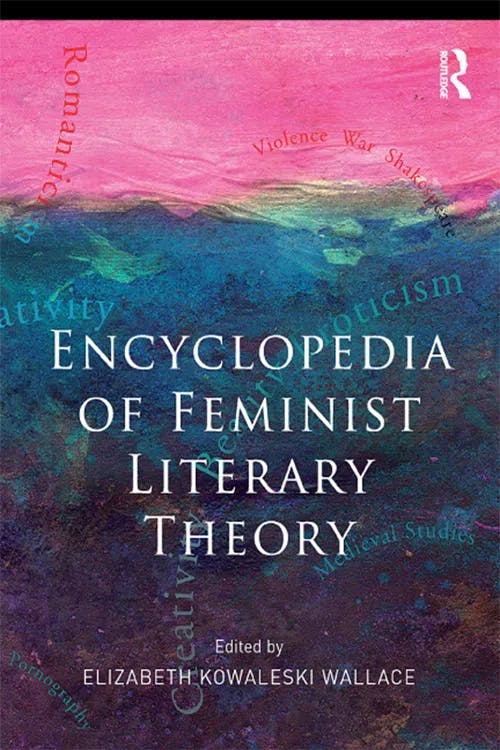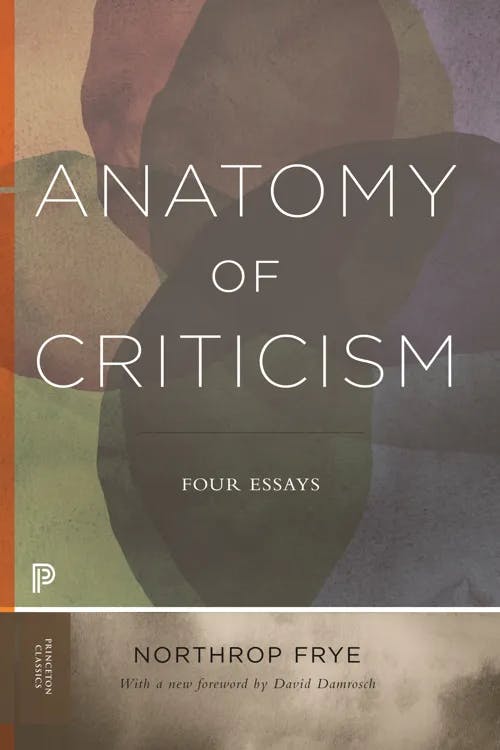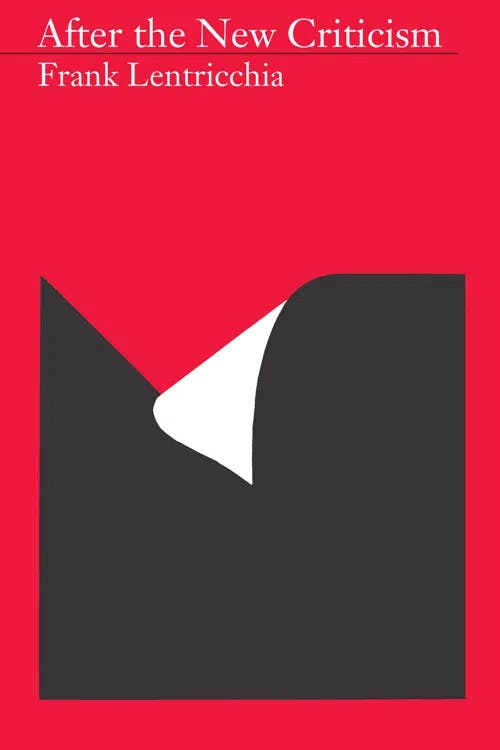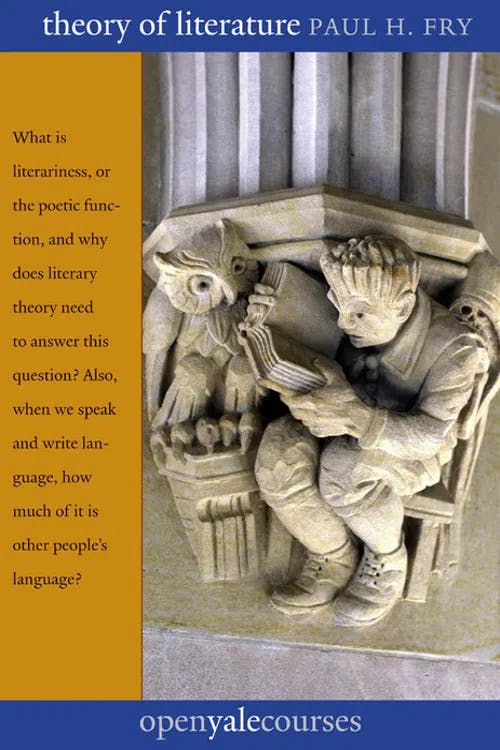What is New Criticism?
PhD, English Literature (Lancaster University)
Date Published: 26.07.2023,
Last Updated: 01.02.2024
Share this article
Origins of new criticism and close reading
New criticism, part of the formalist movement in America in the 1920s, argues critics analyzing a work of literature do not need to take into account biographical, historical, or other contextual factors surrounding the work. Instead, everything that is needed to understand a text is included within the text. A work of literature, therefore, is self-contained and self-referential. As Andrew DuBois explains, new criticism was
a radical response to arcane Indo-European philology on the one hand, and on the other to a body of historical scholarship that seemed more deeply interest in sociology and biography than in literature. (2002)
Edited by Frank Lentricchia and Andrew DuBois
a radical response to arcane Indo-European philology on the one hand, and on the other to a body of historical scholarship that seemed more deeply interest in sociology and biography than in literature. (2002)
While the theory was given its name in John Crowe Ransom’s book, The New Criticism (1941), this way of understanding texts was present in the literary philosophy of writers such as Allen Tate and even earlier in England with the influential modernist writer, T. S. Eliot, and in the scholarly writings of I.A. Richards and William Epsom.
This guide will explore the birth of new criticism, its influences, and main principles, as well as the legacy of new criticism which still bears a mark on literary analysis today.
The influence of T. S. Eliot
In T.S. Eliot's essay “Tradition and the Individual Talent”, he proposes that literary critique should be on the merits of the writer’s work, rather than focusing solely on the artist’s biography, thus paving the way for new criticism. Eliot writes,
Poetry is not a turning loose of emotion, but an escape from emotion; it is not the expression of personality, but an escape from personality. But, of course, only those who have personality and emotions know what it means to want to escape from these things. (1920, [2021])
T. S. Eliot
Poetry is not a turning loose of emotion, but an escape from emotion; it is not the expression of personality, but an escape from personality. But, of course, only those who have personality and emotions know what it means to want to escape from these things. (1920, [2021])
Poetry, therefore, cannot provide the escapism the reader looks for, if analysis is rooted in the contexts of the writer as this brings the reader, invariably, back to reality.
Eliot further argues that using the poet to access the poem is unreliable as the memory and experiences of the poet may fluctuate. In his lecture “The Modern Mind”, Eliot states,
The final poem may so differ from the original experience as to be hardly recognisable. The ‘experience’ . . . may be the result of a fusion of feelings so numerous, and ultimately so obscure in their origins, that even if there be communication of them, the poet may hardly be aware of what he is communicating; and what is there to be communicated was not in existence before the poem was completed. (Eliot, cited in John Casey, The Language of Criticism, 2012)
John Casey
The final poem may so differ from the original experience as to be hardly recognisable. The ‘experience’ . . . may be the result of a fusion of feelings so numerous, and ultimately so obscure in their origins, that even if there be communication of them, the poet may hardly be aware of what he is communicating; and what is there to be communicated was not in existence before the poem was completed. (Eliot, cited in John Casey, The Language of Criticism, 2012)
Therefore, we need to look at the poem to decipher its meaning as the intentions and emotions of the poet between the time of composition and publication may have changed. Any interpretation based on the poet’s original inspiration, thoughts, or ideas is thus prone to error.
The art of close reading
In simple terms, “close reading” involves looking at the techniques used within a text to try and understand it on a deeper level, unlocking further layers of interpretation. Someone practicing close reading may look for instances of irony, paradox, metaphors; they will also look for structural techniques and form for any indication of the poem’s meaning.
The method of close reading was initially practiced by Robert Graves, an often-overlooked influence on new criticism. As Donald J. Childs writes,
The story of the origins of New Criticism is fairly well known and fairly well agreed upon, yet it is not accurate: it leaves out Robert Graves. The story really ought to begin with Graves, if for no other reason than that he was the first to practise what we now recognize as close reading [...] directly from his practice of close reading – and from his early attempts to explain, recommend, and justify this approach to reading poetry – descend a number of New Criticism’s most famous and most fundamental aspects. (2013)
Donald J. Childs
The story of the origins of New Criticism is fairly well known and fairly well agreed upon, yet it is not accurate: it leaves out Robert Graves. The story really ought to begin with Graves, if for no other reason than that he was the first to practise what we now recognize as close reading [...] directly from his practice of close reading – and from his early attempts to explain, recommend, and justify this approach to reading poetry – descend a number of New Criticism’s most famous and most fundamental aspects. (2013)
Childs also pays close attention to Graves’ collaborator, Laura Riding, with whom he wrote the highly influential A Survey of Modernist Poetry (1927). This text demonstrated the skill of close reading with the work of writers such as William Shakespeare and E.E. Cummings, revealing the multiple interpretations that could be contained within the poem.
Like Graves and Riding, numerous new critics highlighted the importance of close reading by engaging in this practice themselves in order to demonstrate its value. As Jessica Pressman writes in her introduction to Digital Modernism,
The New Critical close readings often rise to the level of creative acts themselves. For anyone who has read a good close reading, one that takes you through a journey in a text you’ve read before and teaches you to see it anew, you know how transformative that experience can be. A good close reading can change your mind. It can make you reread and reconsider. Close reading can be not only about art but can become art, and for the New Critics, this was part of the point. (Pressman, cited in The New Modernist Studies Reader, 2021)
Edited by Sean Latham and Gayle Rogers
The New Critical close readings often rise to the level of creative acts themselves. For anyone who has read a good close reading, one that takes you through a journey in a text you’ve read before and teaches you to see it anew, you know how transformative that experience can be. A good close reading can change your mind. It can make you reread and reconsider. Close reading can be not only about art but can become art, and for the New Critics, this was part of the point. (Pressman, cited in The New Modernist Studies Reader, 2021)
Graves would go on to write On English Poetry (1922), a text in which he acknowledges the criticisms of close reading: namely that it is seen as an act that removes the enjoyment or appreciation of poetry. Graves writes,
Literary enthusiasts seem to regard poetry as something miraculous, something which it is almost blasphemous to analyse, witness the outcry against R. L. Stevenson when he merely underlined examples of Shakespeare’s wonderful dexterity in the manipulation of consonants; most scientists on the other hand, being either benevolently contemptuous of poetry, or if interested, insensitive to the emotional quality of words and their associative subtleties, themselves use words as weights and counters rather than as chemicals powerful in combination and have written, if at all, so boorishly about poetry that the breach has been actually widened. (Graves, 2015)
Robert Graves
Literary enthusiasts seem to regard poetry as something miraculous, something which it is almost blasphemous to analyse, witness the outcry against R. L. Stevenson when he merely underlined examples of Shakespeare’s wonderful dexterity in the manipulation of consonants; most scientists on the other hand, being either benevolently contemptuous of poetry, or if interested, insensitive to the emotional quality of words and their associative subtleties, themselves use words as weights and counters rather than as chemicals powerful in combination and have written, if at all, so boorishly about poetry that the breach has been actually widened. (Graves, 2015)
Graves’ close analysis of writers such as William Wordsworth and his guides to understanding the rhythm and musicality of poems using a precise method, highlighting both the beautiful intricacy of poems whilst still using a quasi-scientific approach. Graves is keen to point out, however, that the methods he describes for close reading are what he personally finds useful and not a “water-tight philosophy.”(On English Poetry, 2015)
Close reading was later developed in I.A. Richards’ Practical Criticism (1929). Richards, a professor at Cambridge University, was interested in how university students would interpret (or misinterpret) a poem when they are given no contextual clues, including the name of the author. From this, Richards identified several factors for the misreading of poems; these factors included presumptions or stock responses, sentimentality, difficulty in understanding rhythm, contradictions in the way different readers interpret imagery, and making sense of the overt meaning of the poem.
To understand poetry, Richards argues, the reader must be acquainted with the four types of poetic meaning: sense, feeling, tone, and intonation (Richards, Practical Criticism, 1929, [2017]). Sense refers to how the reader is being directed to specific objects or ideas within the poem. Feeling refers to the emotional or sensuous response we have to poetry. Tone indicates an attitude the poet presents towards their reader. Finally, the intention is the purpose of the author’s work, whether it be to arouse a certain emotion or to draw contrasts.
Richards explains how conventional readings of poetry, those which rely upon biographical, historical, or social contexts have given rise to a lack of critical reading skills. He writes,
Our traditional ideas as to the values of poetry—given us automatically if poetry is set apart from life, or if poems are introduced to us from the beginning as either good or bad, as “poetry” or “not poetry”—misrepresent the facts and raise unnecessary difficulties. It is less important to like “good” poetry and dislike “bad,” than to be able to use them both as a means of ordering our minds. It is the quality of the reading we give them that matters, not the correctness with which we classify them. For it is quite possible to like the “wrong” poems and dislike the “right” ones for reasons which are excellent. (Richards, Practical Criticism, 1929, [2017])
I. A. Richards
Our traditional ideas as to the values of poetry—given us automatically if poetry is set apart from life, or if poems are introduced to us from the beginning as either good or bad, as “poetry” or “not poetry”—misrepresent the facts and raise unnecessary difficulties. It is less important to like “good” poetry and dislike “bad,” than to be able to use them both as a means of ordering our minds. It is the quality of the reading we give them that matters, not the correctness with which we classify them. For it is quite possible to like the “wrong” poems and dislike the “right” ones for reasons which are excellent. (Richards, Practical Criticism, 1929, [2017])
Richards’ philosophy on poetry criticism can, therefore, provide an avenue for those who do not have the knowledge of the literary canon to still appreciate and enjoy literature. In this sense, close reading is democratizing. For Richards, it was crucial that a student, or any reader for that matter, could access the meaning of a poem without being an expert.
The idea of close reading, and methods by which it can be made more effective, were developed in the wake of Richards’ thinking in this seminal text.
William Epsom and ambiguity
One of the most interesting aspects of a poem, and that which presents challenges to new critics, is ambiguity. With this in mind, new critics set out methods by which the reader could look to resolve ambiguity within a text and arrive at a clear interpretation.
William Epsom’s book Seven Types of Ambiguity (1930), inspired in part by Graves’ work on close reading, discusses the cryptic nature of poems. He identifies the seven types of ambiguity as follows:
- The first type arises “when a detail is effective in several ways at once.” Examples of this include figurative techniques such as metaphors as well as other poetic devices including rhythm and adjectives that suggest an extra meaning to the poem.
- The second occurs when “two apparently unconnected meanings are given simultaneously.” Puns and allegories are examples of this,
- The third type arises when “alternative meanings combine to make clear a complicated state of mind in the author.”This may include where there are alternative theories as to where to place emphasis in a text.
- The fourth type happens as a kind of “fortunate confusion” when the writer is discovering his ideas as he goes. The later metaphysical poets are cited as often having done this.
- The fifth type describes the presence of contradiction or irrelevance. In cases such as these, the reader is “forced to invent interpretations.”
- The last type of ambiguity is a full contradiction, indicating a division in the author’s mind.
(Epsom, 1930)
It is worth noting that, despite Epsom’s enormous influence on new criticism, he did tend to separate himself from their ideology in some respects. As Kaye Mitchell explains,
The close textual analysis of passages of poetry that Empson performs in Seven Types of Ambiguity has often led to him being connected with the school of New Criticism, but in fact he contested the anti-intentionalism of the New Critics as well as their doctrine of textual autonomy. (Mitchell, cited in The Routledge Companion to Critical and Cultural Theory, 2013)
Edited by Simon Malpas and Paul Wake
The close textual analysis of passages of poetry that Empson performs in Seven Types of Ambiguity has often led to him being connected with the school of New Criticism, but in fact he contested the anti-intentionalism of the New Critics as well as their doctrine of textual autonomy. (Mitchell, cited in The Routledge Companion to Critical and Cultural Theory, 2013)
Epsom’s views on ambiguity in general resonated with the new critics, who saw any form of ambiguity, irony, or paradox as being a testimony to the poet’s skill.
John Crowe Ransom and his successors
As previously mentioned, the movement derived its name from John Crowe Ransom’s work The New Criticism (1941). Though, as we have established, there was already a strong foundation for new criticism, and scholars practising close reading, before Ransom coined the term. Ransom was a lecturer at Kenyon College and his students included Cleanth Brooks, Allen Tate, and Robert Penn Warren, who would all go on to be influential figures in new criticism. In his seminal work, Ransom outlines the flaws of existing literary criticism as well as taking the time to criticize the literary historians teaching literature at university. As William E. Cain explains,
A crusader for disciplinary coherence and integrity, Ransom called for the professionalization of literary criticism, a trend that intensified in the later decades of the century as higher education in the humanities expanded and the numbers of professors of English rapidly grew. (Cain, “British and American New Criticism” in A Companion to Literary Theory, 2018)
Edited by David H. Richter
A crusader for disciplinary coherence and integrity, Ransom called for the professionalization of literary criticism, a trend that intensified in the later decades of the century as higher education in the humanities expanded and the numbers of professors of English rapidly grew. (Cain, “British and American New Criticism” in A Companion to Literary Theory, 2018)
In an earlier essay, “Criticism Inc” (1937), Ransom explained that literary theory needed to become more “scientific, or precise and systematic.” Ransom writes that the value of a work is usually based on its impact on the audience (such as Broadway producers of comedy shows counting the number of laughs in a test audience). Ransom, however, believes that this is still an unscientific measure for appraising literary works. Such methods, Ransom argues, deny that the artwork is autonomous in its own right. He goes on to state that art should not be viewed in relation to the author’s biography as such evaluations based on historical studies are “perfunctory and mechanical” (1937). Similarly, he states that we should not look to linguistic studies, which define the meaning of words and idioms, to make sense of figurative imagery and allusions. He further argues that we should not apply a moral standard to art when critiquing it. In The New Criticism, Ransom expands on these ideas and outlines how new criticism rejects the personal, historical, moral, and biographical details around a text and the importance of close reading.
Overcoming common fallacies
Two further new critics who sought to dismantle assumptions about how we value a literary work were W. K. Wimsatt Jr and Monroe C. Beardsley. Together, they discussed both “the intentional fallacy” and “the affective fallacy”, notions they attributed to common misreadings of literary works.
Intentional fallacy describes the problem of trying to judge a literary work based on the intent or purpose of the writer. This idea was put forth in W. K. Wimsatt Jr and Monroe C. Beardsley’s essay “The Intentional Fallacy” (1946) in which they explained that we cannot ever truly know the intention of the author. By trying to understand a work using the author’s intentions, critics were prone to making assumptions about the writer’s beliefs, personal growth, and vision for their work. They write:
The poem is not the critic’s own and not the author’s (it is detached from the author at birth and goes about the world beyond his power to intend about it or control it). The poem belongs to the public. It is embodied in language, the peculiar possession of the public, and it is about the human being, an object of public knowledge. What is said about the poem is subject to the same scrutiny as any statement in linguistics or in the general science of psychology or morals. (Wimsatt and Beardsley, "Intentional Fallacy" in Literary Theory, 2017)
Edited by Julie Rivkin and Michael Ryan
The poem is not the critic’s own and not the author’s (it is detached from the author at birth and goes about the world beyond his power to intend about it or control it). The poem belongs to the public. It is embodied in language, the peculiar possession of the public, and it is about the human being, an object of public knowledge. What is said about the poem is subject to the same scrutiny as any statement in linguistics or in the general science of psychology or morals. (Wimsatt and Beardsley, "Intentional Fallacy" in Literary Theory, 2017)
As such, the writer's intentions do not matter in comparison to how it is received. Even the poet using the first person pronoun “I” should be understood as being a dramatic persona, and not representative of the poet and their views. Roland Barthes (though not a new critic himself) would later echo this concept, writing that “the birth of the reader must be at the cost of the death of the Author” (“The Death of the Author” in Readings and the Theory of Religion, 1968, [2016]).
A further idea proposed by Wimsatt and Beardsley is “the affective fallacy” in their essay of the same name in 1949. Affective fallacy is the error that arises from judging the value of a poem based on its emotional effect. Affect had been used in impressionistic criticism as a way of deliberating on the merit of a work. Wimsatt and Beardsley argue this is no indication of a work’s value as it makes judgement-based decisions near impossible.
Irony, paradox, and the heresy of paraphrase
An issue that regularly presents itself in close reading is how we can understand and resolve contradictions or paradoxes within the poem. Poems were at risk of being misinterpreted, according to influential new critic Cleanth Brooks, by readers distorting the meaning of the text through paraphrasing. Though Brooks does acknowledge the usefulness of paraphrase in certain contexts:
We can very properly use paraphrases as pointers and as shorthand references provided that we know what we are doing. But it is highly important that we know what we are doing and that we see plainly that the paraphrase is not the real core of meaning which constitutes the essence of the poem. (The Well Wrought Urn, 1947)
However, Brooks says the danger of committing the “heresy of paraphrase” occurs when we understand these simplifications or overviews from critics as the same as reading the poem. Brooks writes,
If we allow ourselves to be misled by the heresy of paraphrase, we run the risk of doing even more violence to the internal order of the poem itself. By taking the paraphrase as our point of stance, we misconceive the function of metaphor and meter. We demand logical coherences where they are sometimes irrelevant, and we fail frequently to see imaginative coherences on levels where they are highly relevant. (1947)
As Brooks further expands, the poet chooses words to produce specific effects; they also construct the rhythm or rhyme of the poem deliberately. These aspects of the poem are part of its essence and, as such, diluting the poem to its “key points” or overarching message detracts from the poet’s use of techniques. It may also result in misinterpretation as the tone of a certain phrase may be completely misunderstood when not framed alongside the rest of the poem. Brooks goes on to demonstrate this potential for misunderstanding with the poem “Corinna’s Going A-Maying” (1648) by Robert Herrick.
A way that poets can avoid being misconstrued through paraphrase is through their poetic craftsmanship. Brooks argues that using irony, paradox, ambiguity, and other devices resists “any reduction of the poem to a paraphrasable core” (1947). The reader must attempt to resolve the tension created by competing meanings within a poem. Resolving this tension and settling upon a meaning results in unity. The unity achieved through a cogent understanding of the poet’s rhetorical techniques is a unity between different competing meanings within the poem. It unifies patterns within the poem and stabilizes internal paradoxes.
The problems with new criticism
Debates as to whether we can separate a text from the author, or the sociocultural background in which it was produced, continue to this day. Theoretical schools which place high value on historical context, such as new historicism, were created as a rebuttal to new criticism’s seemingly reductionist technique. New historicists saw new criticism’s divorce from context as ahistorical. Lionel Trilling, for example, wrote
It is only if we are aware of the reality of the past as past that we can feel it as alive and present. If, for example, we try to make Shakespeare literally contemporaneous, we make him monstrous. He is contemporaneous only if we know how much a man of his own age he was; he is relevant to us only if we see his distance from us. (Trilling, The Liberal Imagination, 1942)
A further issue of removing texts from the historical and cultural conditions that produced them is that we risk negating the experiences of marginalized voices. As Pressman states,
the New Critics privileged poetry over prose, imagistic, cerebral, and difficult works over those with a direct, colloquial, or sentimental tone. One result of this hierarchy was a relegation of the majority of female and minority writers to the margins. (2021)
As such, new criticism has proven to be an incompatible framework through which to explore feminist issues. As Beverly Schneller writes,
While New Criticism and feminist critics share surface interests in language and meaning, gynocritics stress the women’s voices heard in the diction and form of the works. This interest in writing as women’s writing, combined with a desire to uncover the distinctively female worldview within women’s writing, is incompatible with the independent approach to literature New Critics employed. (Schneller, in Encyclopedia of Feminist Literary Theory, 2009)
Edited by Elizabeth Kowaleski Wallace
While New Criticism and feminist critics share surface interests in language and meaning, gynocritics stress the women’s voices heard in the diction and form of the works. This interest in writing as women’s writing, combined with a desire to uncover the distinctively female worldview within women’s writing, is incompatible with the independent approach to literature New Critics employed. (Schneller, in Encyclopedia of Feminist Literary Theory, 2009)
The biography of the author, for many theorists, cannot be easily discounted especially when their work centers on themes of identity and marginalization.
Other critics of new criticism have accused it of a type of mysticism. In Anatomy of Criticism (1957, [2020]), for example, Northrop Frye, explains that this type of critical theory
is restricted to ritual masonic gestures, to raised eyebrows and cryptic comments and other signs of an understanding too occult for syntax.
Northrop Frye
is restricted to ritual masonic gestures, to raised eyebrows and cryptic comments and other signs of an understanding too occult for syntax.
This view of new criticism employing techniques that are inherently inaccessible to the majority of readers has been difficult to dispel due to anecdotal experience. As Frank Lentricchia states,
It has been argued cogently that the New Criticism also democratised criticism, but Frye’s charge of mystification cannot be brushed easily aside: too many generations of students came out of New-Critical classrooms convinced that their teachers possessed knowledge of the “hidden” meanings of texts to which there was no systematic and disciplined access. (2018)
Frank Lentricchia
It has been argued cogently that the New Criticism also democratised criticism, but Frye’s charge of mystification cannot be brushed easily aside: too many generations of students came out of New-Critical classrooms convinced that their teachers possessed knowledge of the “hidden” meanings of texts to which there was no systematic and disciplined access. (2018)
New criticism today
New criticism continues, in an evolved form, in both academic writing and in pedagogical settings. Today, we can see this in the use of close reading exercises, similar to those Richards used with his students in Practical Criticism, in schools and universities. Certain exams in the UK, even, have dedicated components that deal with “unseen” poetic texts, aiming to test a student’s ability to analyze poetic techniques and derive meaning in isolation. However, the majority of teaching in the field of literature incorporates these close reading techniques with information about the author and the context in which texts were produced. Particularly as education moves towards more inclusivity across the syllabus, it would be remiss to not acknowledge the biographical and cultural information provided about authors and their histories. As Cain writes,
The truth, however, hidden in plain sight, is that the New Criticism is no longer special, distinct, or attention‐seizing as an approach because long ago it became equivalent to literary criticism at its most fundamental, the set of interpretive reading and writing skills that everything else is built upon [...] It is impossible to imagine what literary study would look like—what its practitioners would say that they do—without this core commitment to close reading. (2018)
While Cain acknowledges that this practice has become so routine as to be uninspiring, it is worth noting that new criticism’s impact was transformative for students of literature. As Paul H. Fry explains,
[New criticism] introduced complex fields of unfolding meaning to which students soon felt they could contribute their own insights. They saw patterns of thought and ways of elaborating patterns that the teacher was guiding them toward, and the next thing they knew the fiſty minutes were over and everybody had had a pretty good time. Hard to believe from our point of view that that had never happened in an English class before. (Theory of Literature, 2012)
Paul H. Fry
[New criticism] introduced complex fields of unfolding meaning to which students soon felt they could contribute their own insights. They saw patterns of thought and ways of elaborating patterns that the teacher was guiding them toward, and the next thing they knew the fiſty minutes were over and everybody had had a pretty good time. Hard to believe from our point of view that that had never happened in an English class before. (Theory of Literature, 2012)
It is important to acknowledge new criticism’s influence now that its excitement has worn off. In both academia and education, many use a combination of textual analysis and historical research when writing about literature, seeing the two as complementary rather than competing forms of information.
As Cain succinctly puts it, “[t]oday there is no New Criticism. No one is a New Critic because everyone is. (2018)”
Further reading on Perlego
Literary Criticism: A Short History (2021) by William K. Wimsatt, Jr., Cleanth Brooks
Literature and Understanding: The Value of a Close Reading of Literary Texts (2020) by Jon Phelan
Russian Formalism and Anglo-American New Criticism (2011) by Ewa M. Thompson
What is new criticism?
Who are the most influential writers on new criticism?
What is close reading?
Bibliography
Brooks, C. (1947) A Well-Wrought Urn: Studies in the structure of poetry. Reynal & Hitchcock. Available at the British Library.
Cain, W. E. (2018) “British and American New Criticism” in A Companion to Literary Theory, ed. David H. Richter. Wiley-Blackwell. Available at: https://www.perlego.com/book/992372/a-companion-to-literary-theory-pdf
Casey, J. (2012) The Language of Criticism. Routledge. Available at: https://www.perlego.com/book/1685090/the-language-of-criticism-routledge-revivals-pdf
Childs, D. J. (2013) The Birth of New Criticism: Conflict and Conciliation in the Early Work of William Empson, I.A. Richards, Robert Graves, and Laura Riding. McGill-Queen’s University Press. Available at: https://www.perlego.com/book/3551348/the-birth-of-new-criticism-conflict-and-conciliation-in-the-early-work-of-william-empson-ia-richards-robert-graves-and-laura-riding-pdf
DuBois, A. (2002) “Introduction” in F. Lentricchia and A. Dubois (eds) Close Reading: The Reader. Duke University Press Books. Available at: https://www.perlego.com/book/1466350/close-reading-the-reader-pdf
Eliot, T. S. (2021) The Sacred Wood. Mint Editions. Available at: https://www.perlego.com/book/2663833/the-sacred-wood-pdf
Epsom. W. (1930) Seven Types of Ambiguity. Chatto and Windus. Available at the British Library.
Fry, P. H. (2012) Theory of Literature. Yale University Press. Available at: https://www.perlego.com/book/1089733/theory-of-literature-pdf
Frye, N. (2020) Anatomy of Criticism: Four Essays. Princeton University Press. Available at: https://www.perlego.com/book/1258206/anatomy-of-criticism-four-essays-pdf
Graves, R., and L. Riding. (2002) A Survey of Modernist Poetry. Carcanet Press. Available at: https://www.carcanet.co.uk/cgi-bin/indexer?product=9781857545685
Graves, R. (2015) On English Poetry: Being an Irregular Approach to the Psychology of This Art, from Evidence Mainly Subjective. Perlego. Available at: https://www.perlego.com/book/1844995/on-english-poetry-being-an-irregular-approach-to-the-psychology-of-this-art-from-evidence-mainly-subjective-pdf
Krieger, M. (2015) Window to Criticism: Shakespeare’s Sonnets and Modern Poetics. Princeton University Press. Available at: https://www.perlego.com/book/739417/window-to-criticism-shakespeares-sonnets-modern-poetics-pdf
Lentricchia, F. (2018) After New Criticism. University of Chicago Press. Available at: https://www.perlego.com/book/1850630/after-the-new-criticism-pdf
Mitchell, K. (2013) “William Epsom” in P. Wake and S. Malpas (eds) The Routledge Companion to Critical and Cultural Theory. Routledge. Available at: https://www.perlego.com/book/1615147/the-routledge-companion-to-critical-and-cultural-theory-pdf
Pressman, J. (2021) “Introduction to Digital Modernism” in S. Latham and G. Rogers (eds) The New Modernist Studies Reader: An Anthology of Essential Criticism. Bloomsbury Academic. Available at: https://www.perlego.com/book/2106937/the-new-modernist-studies-reader-an-anthology-of-essential-criticism-pdf
Ransom, J. C. (1937) “Criticism, Inc”. VQR, National Journal of Literature and Discussion, vol. 99. Available at: https://www.vqronline.org/essay/criticism-inc-0
Ransom, J. C. (1941) The New Criticism. New Directions. Available at the British Library.
Richards, I.A. (2017) Practical Criticism: A Study of Literary Judgment. Routledge. Available at: https://www.perlego.com/book/1577792/practical-criticism-a-study-of-literary-judgment-pdf
Schneller, B. (2009) “New Criticism” in Kowaleski Wallace, E. (ed) Encyclopedia of Feminist Literary Theory. Routledge. Available at: https://www.perlego.com/book/1695756/encyclopedia-of-feminist-literary-theory-pdf
Wimsatt Jr, W. K., and M.C. Beardsley. (1949) “The Affective Fallacy”. The Sewanee Review, vol 57. Available at: https://www.jstor.org/stable/27537883
Wimsatt Jr, W. K., and M.C. Beardsley. (2017) “The Intentional Fallacy” in J. Rivkin and M. Ryan (eds) Literary Theory: An Anthology. Wiley-Blackwell. Available at: https://www.perlego.com/book/992490/literary-theory-an-anthology-pdf
PhD, English Literature (Lancaster University)
Sophie Raine has a PhD from Lancaster University. Her work focuses on penny dreadfuls and urban spaces. Her previous publications have been featured in VPFA (2019; 2022) and the Palgrave Handbook for Steam Age Gothic (2021) and her co-edited collection Penny Dreadfuls and the Gothic was released in 2023 with University of Wales Press.

